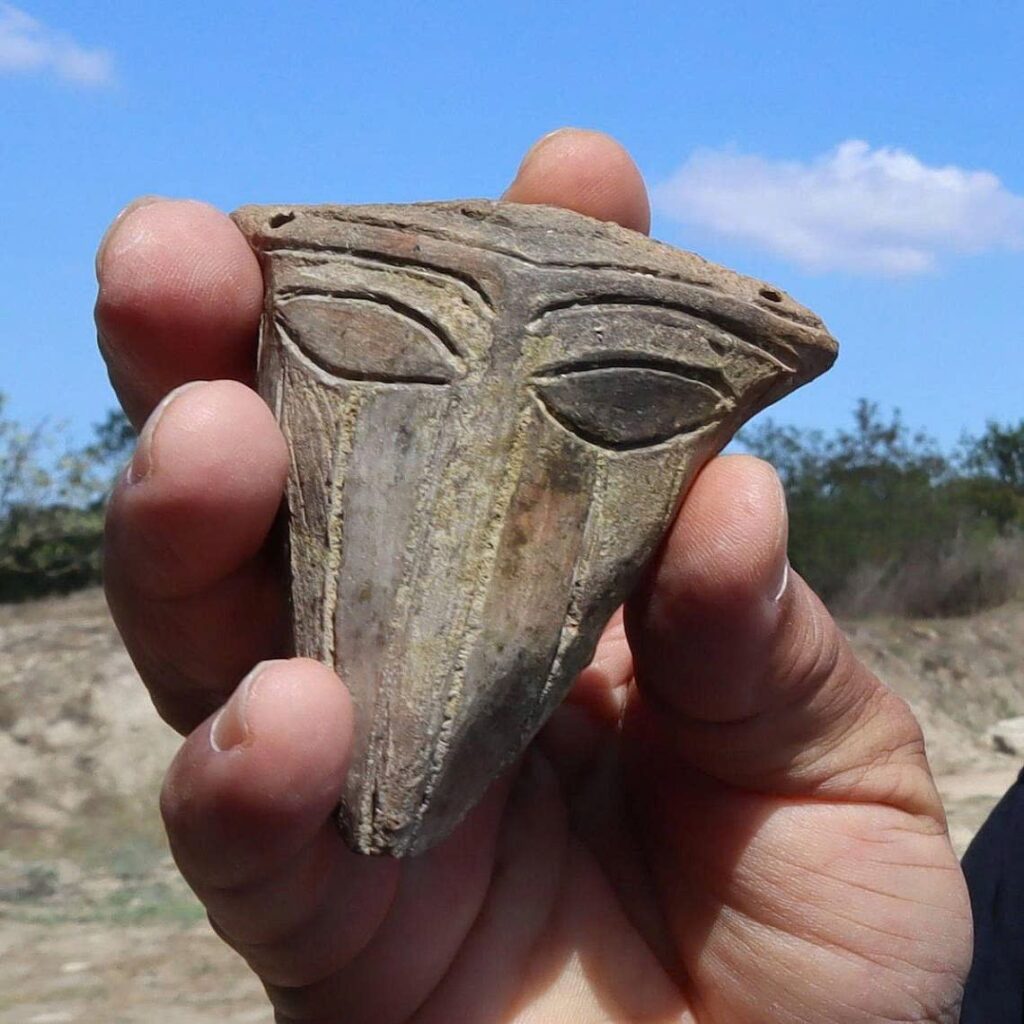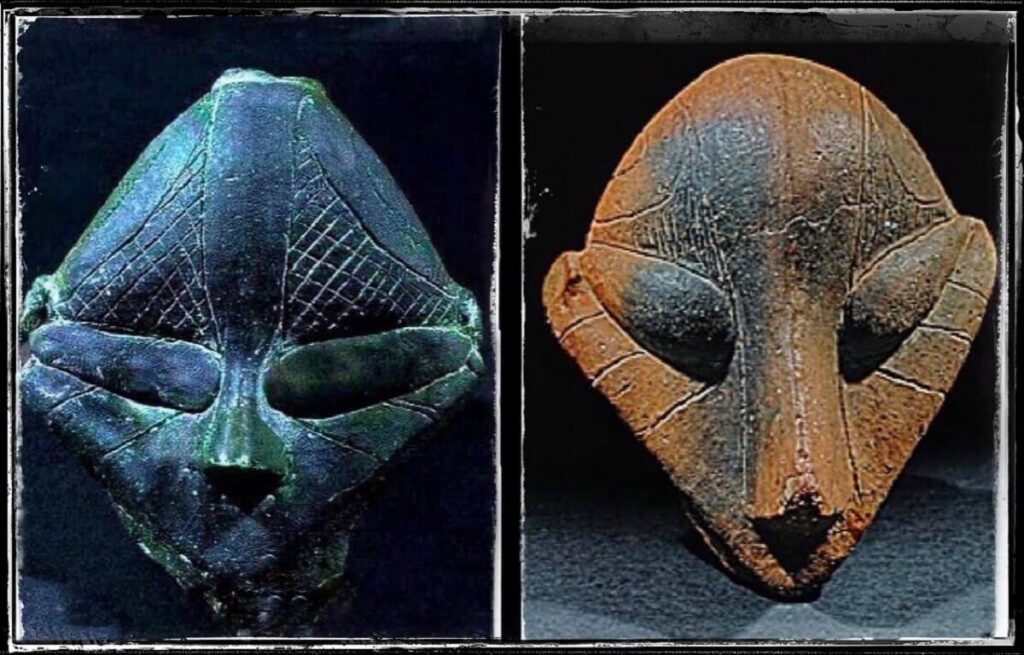Ancient Artifact Reveals the Face of Europe’s Earliest Urban Center

In the heart of Northeast Bulgaria, archaeologists have unearthed a remarkable relic that challenges our understanding of ancient civilizations. The Provadiya – Solnitsata settlement, often referred to as “The Salt Pit,” has yielded a mysterious mask that blends human and animal features, dating back to the Late Chalcolithic period, some 6,000 years ago.
A Face Without a Voice: The Mouthless Marvel

Discovered in 2014, this triangular clay mask immediately caught the attention of researchers with its unique characteristics. Despite lacking a mouth, the artifact boasts intricately crafted eyebrows, a stylized nose, and striking elliptical eyes. Short protrusions at the top, possibly representing ears, suggest the mask may have been worn or displayed as a pendant.
Decoding Ancient Symbolism

Dr. Vasil Nikolov, a leading expert in prehistoric artifacts, believes the mask’s design holds deeper significance. “The pronounced eyes speak volumes compared to the absent mouth,” he notes. The polished vertical bands beneath the eyes further hint at the mask’s role as a powerful status symbol rather than mere decoration.
The Salt Pit: Cradle of Early European Urbanism
Europe’s First Fortress: Protecting Ancient Wealth

The Provadiya – Solnitsata settlement is not just the home of this enigmatic mask; it’s also the site of Europe’s oldest known fortress walls. Built approximately 6,700 years ago, these massive stone structures were designed to safeguard the settlement’s most valuable resource: salt.
Salt: The White Gold of Antiquity
Beneath the settlement lies a vast cone-shaped rock salt deposit, which the ancient inhabitants expertly exploited. This early salt production not only fueled local trade but also shaped the economic and social landscape of the region, serving as a precursor to currency long before the advent of gold.

As we continue to unravel the mysteries of Provadiya – Solnitsata, this 6,000-year-old mouthless mask stands as a silent witness to the ingenuity, artistry, and complexity of one of Europe’s earliest urban civilizations. It reminds us that the foundations of our modern world were laid by the hands of these ancient innovators, whose legacy continues to fascinate and inspire us today.
